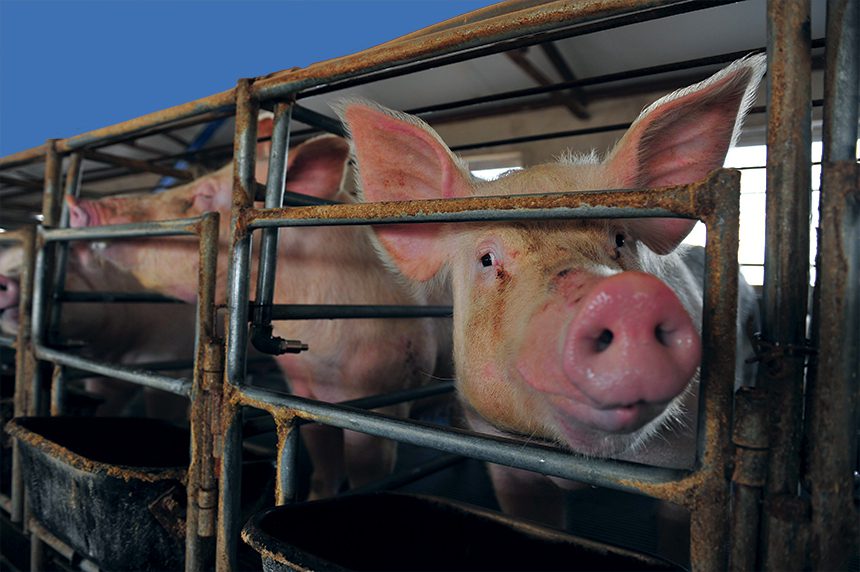
When you work in a veterinary hospital with emergency service, it’s normal to be at work at 3:00 a.m. At a diagnostic laboratory, that is far less common and typically reserved for an animal health emergency. In late September 2015, the Diagnostic Center for Population and Animal Health (DCPAH) received a call from the State Veterinarian’s office that would result in a very long night at the lab. Vesicular lesions had been detected on pigs delivered to a slaughter facility.
In the preceding weeks, several cases of Senecavirus A (SVA, formerly referred to as Seneca Valley virus or SVV) had been detected in the upper Midwest. On September 8, 2015 the American Association of Swine Veterinarians (AASV) Health Committee met to discuss SVA. The committee determined that the evidence available at that time suggested SVA to be a “widespread Emerging Swine Production Disease (ESDP) fitting the criteria of a TYPE 3 emerging disease outbreak.” (AASV) Senecavirus A is particularly troubling because the clinical signs are indistinguishable from several vesicular foreign animal diseases (FADs) including foot-and-mouth disease, vesicular stomatitis, and swine vesicular disease, which are reportable, trade-limiting FADs in swine. As a result, rapid response and differential diagnosis is critical.
In addition, all cases must be handled as FAD investigations, and every sample is treated as a FAD suspect. DCPAH currently has four (4) personnel certified by the USDA National Animal Health Laboratory Network (NAHLN) to conduct FMD testing. When the samples arrived at DCPAH close to midnight, Dr. Annabel Wise, specialist in the virology section, and laboratory technologist Michael Chumbley performed the FMD assay on those samples, staying at the laboratory well into the night, waiting for the results so that state officials could be notified immediately.
“A potential FAD outbreak is an animal health emergency of great magnitude. We have a responsibility to test those samples immediately and get the results out as quickly as possible. Given the potential impact if FMD or another FAD occurred in the state, time is critical. While these cases were sent to the National Veterinary Services Laboratory for FAD investigation, we screened them simultaneously using our Biosafety-level 3 laboratory to ensure strict biocontainment,” says Wise.
Over the next several weeks, the Michigan Department of Agriculture and Rural Development (MDARD) Animal Industry Division (AID) responded almost daily to lesions in pigs delivered to the slaughter facility. DCPAH continued to provide same-day FMD test information on those submissions and forwarded samples to the University of Minnesota Veterinary Diagnostic Laboratory (UM VDL) for SVA testing. During this time, Dr. Roger Maes, virology section chief, led the lab validation and implementation of a real-time PCR assay, in close collaboration with the UM VDL, where the samples were sent initially. He also isolated the virus from different cases to provide positive control material for the assay.
“This was a real team effort, very much involving Dr. Wise, our laboratory supervisor Suzanne Mason, and the technologists in our lab,” says Maes.
By November, DCPAH had implemented an assay for SVA and was able to test samples for both FMD and SVA. Through the end of the fiscal year, DCPAH tested more than 160 samples for SVA.
“Our laboratory was created to help protect the state of Michigan from an animal health disaster. Modeling demonstrates that our ability to provide rapid detection would reduce the economic loss by approximately $207.6 million if an FMD outbreak were to occur in an agricultural area such as the Thumb region. I’m proud of our close relationships with our state and federal partners, and the commitment of our faculty and staff to respond quickly and efficiently when called upon,” says Dr. Rachel Reams, DCPAH director.
And with Senecavirus A, that was certainly the case.
References
American Association of Swine Veterinarians, “AASV Swine Health Committee Considers SVV.” September 9, 2015.